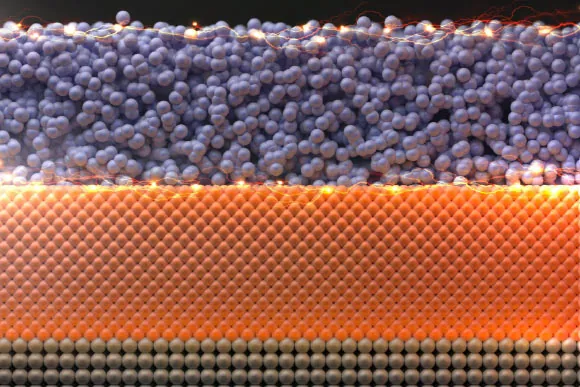
Unleashing Power: Researchers Develop Game-Changing Ultrathin Niobium-Phosphide Conductor for Future Nanoelectronics!
2025-01-10
Author: Rajesh
In an exciting breakthrough, Stanford University researchers have unveiled a revolutionary ultrathin conductor made from niobium phosphide, which showcases remarkable electrical conductivity surpassing that of copper. These innovative niobium phosphide films are just a few atoms thick and can be produced at low temperatures, making them compatible with the cutting-edge fabrication methods used in modern computer chips.
Key Insights from the Research
Leading the research, Dr. Asir Intisar Khan explained, “We are breaking a fundamental bottleneck of traditional materials like copper. Our niobium phosphide conductors enable us to transmit faster and more efficient signals through ultrathin wires.”
The advancement comes at a crucial time when energy efficiency is paramount for data centers that house and manage vast amounts of information. Even minor improvements in chip efficiency can lead to substantial energy savings on a large scale, as Professor Eric Pop notes, “This could lead to reduced energy consumption across billions of operations, allowing us to focus more power on computation rather than on wasted energy.”
Material Properties and Significance
Niobium phosphide is categorized as a topological semimetal, meaning it conducts electricity exceptionally well across its surface, outperforming even copper as the film thickness drops below a mere 5 nanometers. Traditional metals, like copper, struggle under these conditions, losing efficiency and generating heat as they thin out beyond 50 nanometers.
The discovery of niobium phosphide’s superior conductivity at such thin dimensions marks a significant milestone in nanoelectronics. “In high-density electronic systems, maintaining effective conductor properties at smaller scales is essential,” remarked Professor Pop. “Our results show that these new materials can significantly cut power loss in extremely thin metal connections.”
Innovative Perspectives on Non-Crystalline Conductors
The team’s research stands out as it demonstrates that non-crystalline materials can serve as effective conductors—an idea previously thought unfeasible without the need for precise crystalline structures formed at high temperatures. “We’re presenting a new class of topological semimetals, which may significantly reduce energy consumption in future electronic devices,” said doctoral student Akash Ramdas.
Production at Manageable Temperatures
Crucially, the niobium phosphide films were produced at a manageable temperature of 400 degrees Celsius (752 degrees Fahrenheit), ensuring they do not compromise existing silicon chips during manufacturing. “Creating perfect crystalline wires can be impractical for nanoelectronics,” mentions Professor Yuri Suzuki, emphasizing the flexibility of using slightly disordered materials that still meet required conductive properties.
Future Steps and Applications
The researchers are now exploring how to convert these niobium phosphide films into narrow wires to further evaluate their performance in practical applications. Pop enthusiastically stated, “We’ve translated fascinating physical principles into practical electronics, and this advancement could significantly impact both current and next-generation devices.”
The findings are documented in the prestigious journal *Science*, heralding a promising future for energy-efficient nanoelectronics.
Conclusion and Impact
This groundbreaking material could catalyze a massive shift in how we design and manufacture electronic components, potentially paving the way for quicker, more resilient computing systems that utilize less energy—impacting everything from smartphones to massive cloud data centers! Stay tuned for developments as this fascinating research unfolds!
 Brasil (PT)
Brasil (PT)
 Canada (EN)
Canada (EN)
 Chile (ES)
Chile (ES)
 Česko (CS)
Česko (CS)
 대한민국 (KO)
대한민국 (KO)
 España (ES)
España (ES)
 France (FR)
France (FR)
 Hong Kong (EN)
Hong Kong (EN)
 Italia (IT)
Italia (IT)
 日本 (JA)
日本 (JA)
 Magyarország (HU)
Magyarország (HU)
 Norge (NO)
Norge (NO)
 Polska (PL)
Polska (PL)
 Schweiz (DE)
Schweiz (DE)
 Singapore (EN)
Singapore (EN)
 Sverige (SV)
Sverige (SV)
 Suomi (FI)
Suomi (FI)
 Türkiye (TR)
Türkiye (TR)
 الإمارات العربية المتحدة (AR)
الإمارات العربية المتحدة (AR)